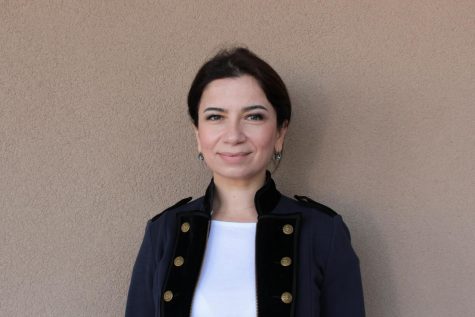Every Stone: A Key to A Memory
37 years later, Saroyan House museum opens its doors to the public.
In the deep end of the backyard, sat a woman your eyes couldn’t miss. As she took a sip from a glass of wine, she recalled all the good times she had spent in that very spot many years ago with a special friend.
“I got to know [him] really well. He was fun-loving, he was wild, he not only lived in a moment, but he was the moment when you were around him, everyone else was rotating around him and he was the sun,” said Brenda Najimian. “I was his driver in the 1970s and it was an incredible experience.”
Najimian said it was her first time returning to William Saroyan’s house since she lost her best friend.
Famed Armenian-American writer and Pulitzer Prize recipient Saroyan died in 1981, after which the doors to his home were shut to his friends. For the next 34 years, the house would have many owners, without much of a stake in its legacy.
It was about to be sold at an auction until new owners came through. They are people who aren’t indifferent to the destiny of Saroyan’s House.
It has been remodeled to serve as a museum to educate about Pulitzer Prize-winning novelist and playwright. It is the one and the only museum dedicated to him. The opening ceremony coincided with Saroyan’s 110th birthday.
Saroyan’s home was purchased by The Renaissance Cultural Fund in 2015. Several months later, the founder, Arthur Janibekyan announced the start of the Saroyan House Museum Project. In the past three years, The Renaissance Cultural Fund created a large digital archive of photographs, paintings, graphics, movies and recordings collected from Saroyan’s friends, relatives and private collectors. Saroyan’s House is unique, since it is the first digital museum in California. There are physical memorabilia present, but much is digitalized.
“Saroyan’s talent is huge and his museum wouldn’t be complete if only personal items or photographs were displayed,” said Janibekyan. “The digital museum is just the first step of showcasing his legacy. We plan a number of other features from Saroyan’s readings to various media-projects,” Janibekyan said.
There are more surprises to come for all Saroyan lovers. Until then, we can enjoy the digital collection of the beloved author.
In his early years, Saroyan developed a habit, or perhaps, a love for collecting stones everywhere he went. And as you walk into the house, a big wall illustrates his passion for these stones, along with his thoughts of these stones.
“Every stone, every stair is a key to a memory,” he once said. Saroyan picked a stone during his visit to Bitlis, Western Armenia, where his parents were born and fled during the Armenian Genocide. He had a special connection with that stone.
In the second room, there is an interactive wall of Saroyan’s photos, which introduce his life from early childhood to his death. The dark walls with digital components come to life as soon as they sense the presence of a visitor.
In the next room, a viewer meets a hologram of William Saroyan in his office. His old typewriter, fedora hat, and a bookshelf provide a personal atmosphere. The hologram of Saroyan speaks to visitors and expresses some fragments from his works.
And as you walked through each one of the rooms, you could sense Saroyan’s presence and his lively but yet sorrowful spirit.
“He was wonderful, kind, gentle, and sometimes sad,” Saroyan’s old friend reflected. “We talked about anything and everything. We would sit in this house and have tea, he liked hot tea, and we talked about so many things, he encouraged me.”
The relationship was warm and there was a kind of mentorship, Najimian described. “When I had problems, I might bring them up to him and he helped me make some decisions and kind of guided me. Anyway, it was just remarkable,” she smiled.
Najimian introduced Saroyan’s nephew, Hank Saroyan, who made a film for ABC “The Parsley Garden.” The film is based on Saroyan’s play and, as he mentioned, was a concept influenced by his uncle. It also won an Emmy.
“I brought the hall crew down from L.A. [and] we shot 33 mm film, which is unheard of in that franchise,” the author’s nephew said. “The story was about a little Armenian boy back in 1932. I was walking around and I picked spots just from my mind’s eye, and turned out every place I picked was part of my uncle’s history. And I won the Emmy in 1994. I’m pretty excited about doing more,” said Hank Saroyan. During the opening ceremony, he revealed his plans to continue telling his uncle’s story.
“I grew up in this city and have a lot of really good Armenian friends,” said Lee Brand, the mayor of Fresno. “William Saroyan is one of the best writers of my generation. As a mayor of this city, I have a great sense of pride that I’m a part of this event.”
That evening, Saroyan’s guests and fans gathered at the Fresno State University to remember, to share memories about him and to keep his image alive.
The house museum is located at 2729 West Griffith Way, Fresno, Calif., 93705.

